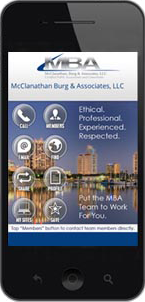Tax Day Countdown: Reduce Your Tax Bill with Retirement Accounts

Tax Day is right around the corner. If your tax bill is higher than you’d like, there may still be an opportunity to lower it. If you qualify, you can make a deductible contribution to a traditional IRA right up until the Wednesday, April 15, 2015, filing date and still benefit from the resulting tax savings on your 2014 return.
In addition, small business owners can set up and contribute to a Simplified Employee Pension (SEP) plan up until the due date for their returns, including extensions.
Roth vs. Traditional IRAs
Treasury Answers Questions about New myRA Accounts
During his 2014 State of the Union address, President Obama unveiled a new type of retirement account called “My Retirement” accounts (or simply myRAs) that are geared toward people who are just starting to save for retirement.
What Is a myRA?
It’s a type of Roth IRA aimed at employees with no other retirement plan, and a myRA invests in only a unique U.S. Treasury security. In short, myRA is a simple, affordable and safe way for low- and moderate-income people to save for retirement.
What Are the Benefits?
Because principal and interest paid on myRAs are backed by the federal government, the balances in these investment accounts will never go down. Other key features include:
- You can open a myRA account with as little as $25.
- You can contribute $5 or more every payday.
- Deposits are automatic every payday.
- No fees are charged on myRAs.
- MyRAs are portable, which means they’re not tied to a single employer. You can keep your myRA if you switch jobs.
Account holders can build savings for 30 years or until their myRA reaches $15,000 — whichever comes first. After that, myRA balances will transfer to private-sector retirement accounts.
myRAs are subject to the same rules that apply to Roth IRAs, including the income-based eligibility for contributions, maximum annual contributions and tax treatment of distributions. Currently, myRAs are available only for individuals who work for employers that offer direct deposit and are able to direct a portion of their paychecks to their myRA accounts. The Treasury plans to offer myRAs in the future to others, including self-employed individuals and employees that don’t work for companies that offer direct deposit.
How Do Employers Benefit?
Employers that don’t offer a retirement plan may want to look into promoting myRAs to employees. It’s a retirement plan option that costs nothing for participating employers, because they don’t administer employee myRA accounts, contribute to them or match employee contributions. Each payday, a participating employer simply facilitates a payroll deduction from the employee’s paycheck to the designated myRA account.
The myRA website also features an employer page that explains how to enroll in the program. It has a variety of materials companies can use to encourage employees’ myRA participation, including a poster to hang in the breakroom, a double-sided brochure that can be printed or shared electronically with employees and a Web banner for use on a company intranet site or other internal communication channel.
You also have until April 15 to make a contribution to a Roth IRA. Here are the main differences between a traditional IRA and a Roth:
- Contributions to a traditional IRA are deductible on your tax return depending on your income and whether you — or your spouse, if filing jointly — are covered by an employer’s retirement plan (see table below). In contrast, contributions to a Roth IRA are not deductible.
- Withdrawals from a traditional IRA are taxable, while withdrawals from a Roth IRA are tax-free as long as the account has been open at least five years and you are age 59 1/2 or older.
- At age 70 1/2, you must begin to take withdrawals from a traditional IRA or face steep penalties. But with a Roth IRA, you don’t have to take withdrawals at any age, meaning the account can continue to grow tax-free for decades and be passed on to your heirs income-tax-free.
An Option for High Wage Earners
Let’s say you can’t qualify for IRA deductions because you actively participate in an employer-sponsored retirement plan and your adjusted gross income exceeds the level allowed (see table below).
Fortunately, highly paid wage earners aren’t completely closed out of the IRA market. Even if you can’t deduct IRA contributions or contribute to a Roth IRA, you’re still permitted to makenondeductible contributions to a traditional IRA. As with regular IRA or Roth IRA contributions, the limit for 2014 is $5,500, plus a “catch-up contribution” of $1,000 if you were age 50 or older on December 31, 2014.
Contributions to a nondeductible IRA allow you to build up tax-deferred earnings, just like a regular IRA, until distributions are made. This allows you to save more for retirement. The portion of your IRA distributions representing nondeductible contributions is tax-free.
Important Note: When making a deductible or nondeductible contribution, be sure to tell the IRA trustee that the contribution is for 2014. Otherwise, the trustee may report it as being for 2015.
Opportunity for Working Teens
Did your children or grandchildren earn some money working last year? If so, they also have time to make a 2014 IRA contribution. As you’ll see, the IRA contribution strategy is a terrific idea because the children can potentially accumulate a truly amazing amount by retirement age.
Specifically, your child can contribute the lesser of earned income or $5,500 for the 2014 tax year.
Children with earned income have the option of contributing to either a traditional deductible IRA or a tax-free Roth IRA. The contribution limits are the same for both. Having your child contribute to a Roth account is usually the best alternative, even though it doesn’t create a tax deduction. Why? Your child can later withdraw all or part of his or her Roth IRA contributions — without any federal income tax or penalty — to pay for college, buy a car, put a down payment on a new house or for any other reason. (However, he or she generally cannot withdraw any Roth account earnings tax-free before age 59 1/2.)
Of course, even though the child will have the right to withdraw Roth IRA contributions without any adverse federal income tax consequences, the best strategy is to leave as much of the account balance as possible untouched until retirement age.
Example: Let’s say your child contributes $1,000 to a Roth account this year. After 45 years, the account would be worth $31,920, assuming an 8 percent annual return. Say your kid contributes another $1,000 next year and lets the money ride. The Roth IRA would be worth $61,475 after 45 years. As you can see, the numbers really start adding up. After age 59 1/2, your child can begin taking federal-income-tax-free withdrawals. In other words, your child will never owe any federal income tax on the accumulated Roth IRA earnings. In contrast, if your child contributes to a traditional deductible IRA, all subsequent withdrawals will be taxable income. Payouts before age 59 1/2 are also hit with a 10 percent penalty tax, unless they are used for certain IRS-approved reasons (including paying for college or a first home).
Here’s another big reason for the Roth IRA alternative: Your child may not actually save any taxes by contributing to a traditional deductible IRA. Why? Because an unmarried dependent taxpayer’s standard deduction amount automatically shelters up to $6,200 of earned income for 2014 from the federal income tax. (For 2015, the standard deduction increases to $6,300.) Therefore, contributing to a traditional IRA won’t necessarily create any current tax savings unless your child has a fairly substantial amount of income. So a Roth IRA is generally the best move.
One more plus: Owning a Roth IRA (or a traditional IRA for that matter) generally won’t cost your child any financial aid dollars at college time (at least not under the current guidelines). This is because the financial aid calculations generally don’t count IRAs as assets.
Act Fast to Save
If you’d like to make an additional retirement account contribution to lower your 2014 tax bill (if you qualify) or to build up additional retirement funds, contact us today. Time is limited — don’t miss the opportunity to make a 2014 IRA, Roth IRA or SEP contribution. Below is a chart with many of the details for this filing season. (Note: These figures are for 2014. Some amounts increased for 2015.)
|
|
2014 IRA Deadlines and Limits |
|
IRA and |
You can contribute up to $5,500 until Wednesday, April 15, 2015 ($6,500 if you were age 50 on December 31, 2014). |
|
SEP contributions |
You can contribute up to the lesser of 25 percent of compensation or $52,000 by April 15, 2015, or by the extended due date (up to Thursday, October 15, 2015) if you file a valid extension. (There is no SEP “catch up” bonus.) |
|
Age limits |
You must be under age 70 1/2 as of December 31, 2014, to contribute to a traditional IRA. Contributions to a Roth can be made regardless of age, if you meet the other requirements. |
|
|
2014 IRA Phaseout Ranges |
|
Traditional IRAs when not covered by a retirement plan at work |
No phaseout with any amount of adjusted gross income (AGI). |
|
Traditional IRAs when active in an employer retirement plan |
|
|
Traditional IRAs if spouse participates in an employer-sponsored plan |
Phaseout occurs between AGI of $181,000 and $191,000. |
|
Roth IRAs |
|
© Copyright 2015. All rights reserved.
Brought to you by: McClanathan, Burg & Associates, LLC




